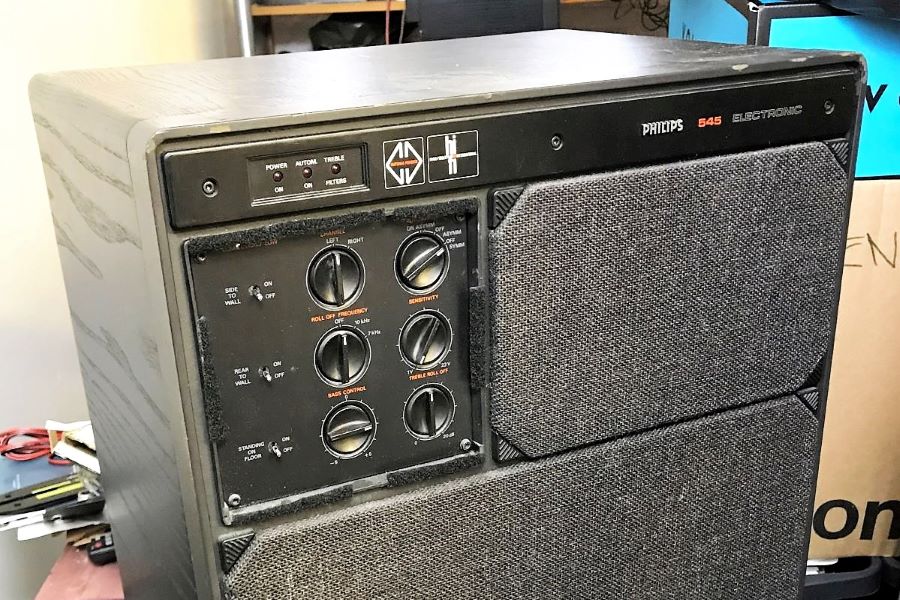How to make a dynamic speaker driver follow the signal applied to it as accurately as possible? This issue has been pondered by the speaker industry for decades, and still is. Since the early days of sound reproduction, it has been clear that a dynamic speaker element is in many ways an imperfect means of reproducing a control signal from an amplifier, and especially at frequencies below 200 Hz. The distortion produced by the bass note near the resonant frequency can be at worst 5 to 10%, i.e. several tens of times the distortion produced by the amplifier.
The imperfections are found in the chassis of the driver, the voice coil, the magnetic structure, but especially in the cone and its suspension. It is very hard to make the cone move precisely cylindrically (piston like). It is even more difficult to get the cone to accelerate and stop precisely. Nor does the suspension spring exactly according to the input signal, and never returns exactly to its original rest position. For these reasons, among others, the woofer cone, which typically has a large displacement/motion deviation ?, is rarely located exactly where it should, according to the signal from the amplifier, be, i.e., does not accelerate at a given speed. Much of the distortion produced by the speaker at low frequencies is due to deficiencies in the interplay between the amplifier and the driver.
Over the decades, speaker manufacturers have sought to address these shortcomings in a number of different ways, often by developing better speaker units and better-performing cones for them. New miraculous cone materials or combinations thereof are still reported almost weekly. The reason why expensive ceramic elements found their way into high-end speakers in the 1990s was precisely their order of magnitude lower distortion.
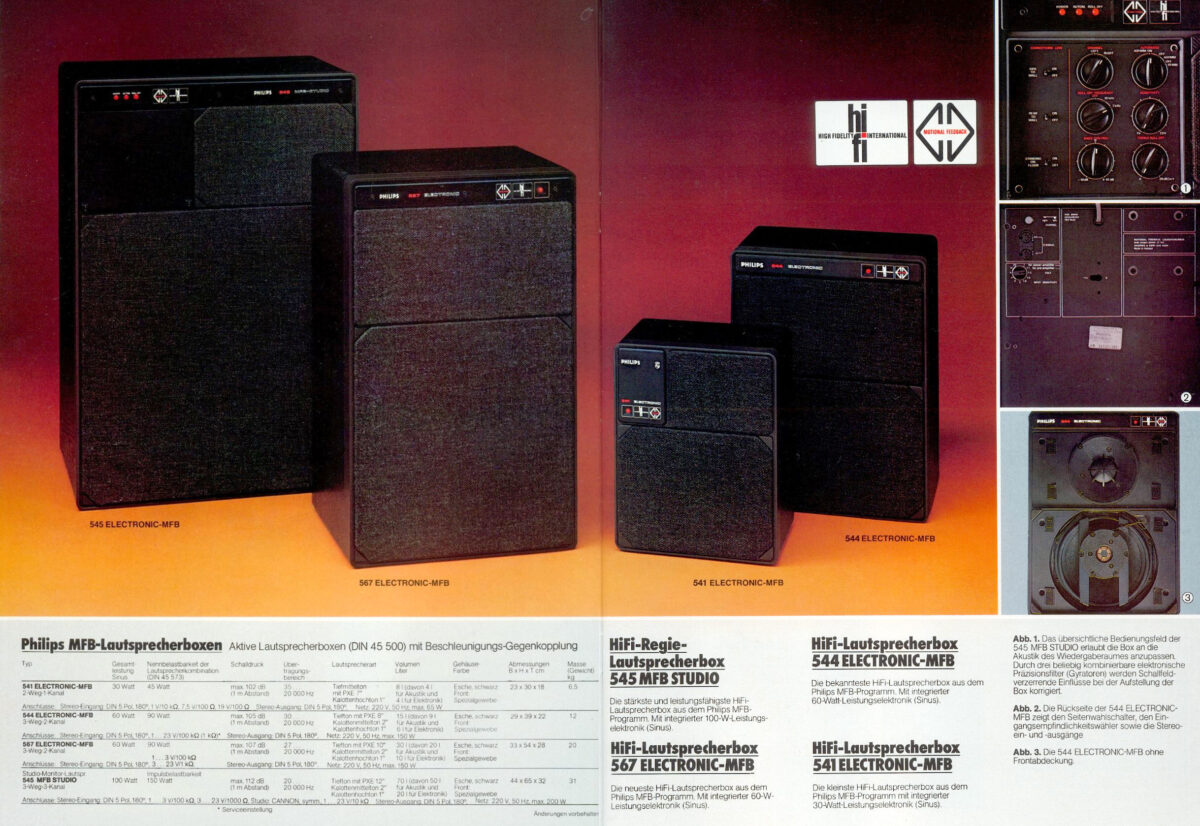
The electronics giant Philips worked on the same issue fiercely at the turn of the 1960s and 1970s. Its solution wasn’t a higher quality speaker element with an exotic cone; its proposal was Motional Feedback (MFB). However, the basic goal was the same: to force the woofer of the speaker to behave so that the input signal from the amplifier is reproduced by the speaker like the original signal.
Motional feedback
Motional feedback can be thought of as a standard (negative) global feedback in the amplifier that minimizes both linear and nonlinear distortion, but with the difference that feedback is not taken from the amplifier’s speaker output (voltage / current) but from the speaker output, more specifically, from the small and light accelerometer attached to the woofer cone/voice coil. fixed accelerate sensor convexity. In motion feedback, the speaker becomes part of the feedback loop, and instead of the quality of the driver, the quality of the sensor becomes decisive.
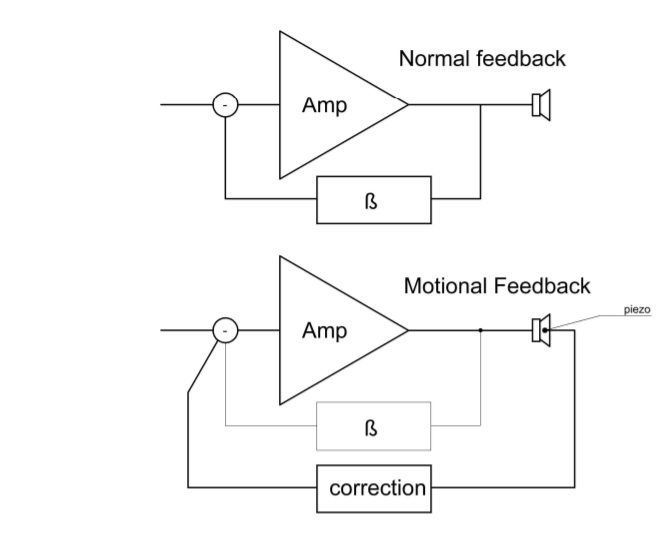
In Philips’ MFB speakers, the sensor was a piezoelectric PXE accelerometer mounted underneath the dust cup (PXE refers to the piezo material used) which, when vibrating, produces an electrical signal in the same way as in old crystal cartridges. The sensor measures the acceleration of the woofer cone / voice coil, and transmits the PXE signal to a comparator, which compares it with the input signal of the amplifier. If there is a difference, the comparator generates an error correction signal that modulates the output of the amplifier so that the acoustic output of the driver element maintains the waveform of the input signal virtually identical.
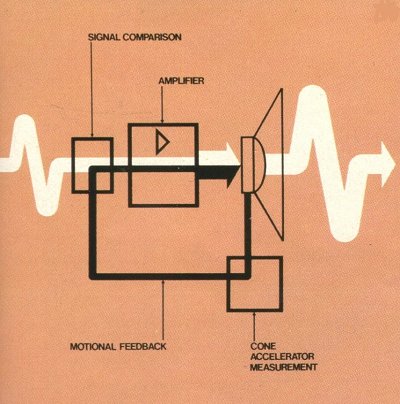
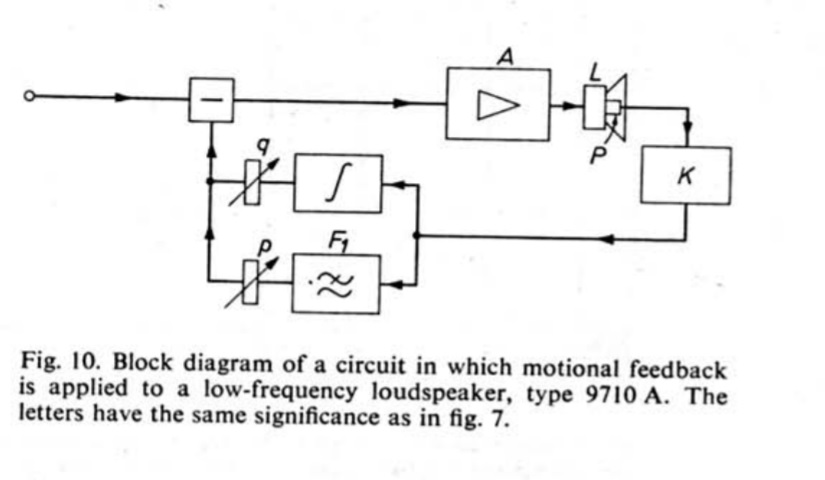
Feedback-based error correction systems inevitably have some kind of delay (for the RH 545 loudspeaker, Philips reports a response time of less than 1 s with a signal above 1.5 mV) and other technical shortcomings. Despite the problems, Philips managed to get its motion-feedback speakers to work as planned.
In Philips’ speakers the accelerometer was only used in the woofer, the reason being that only at frequencies below 500 Hz does the cone tend to behave uniformly over its entire surface area, thus allowing the voltage corresponding to the speaker output to be determined.
The technique significantly reduced linear distortion due to woofer resonance as well as nonlinear distortion due to suspension and the magnetic structure. At the same time, the resonant frequency of the system decreased, allowing for deeper bass reproduction from a relatively small-volume speaker cabinet. For example, the bass response of the compact (23 x 29 x 17 cm) RH541 went down straight to 35 Hz and the distortion between 35 and 500 Hz was only <0.5%. In addition, the technique increased the speaker’s power handling, and made it easier to compensate for the acoustic room effects.
A bit of history
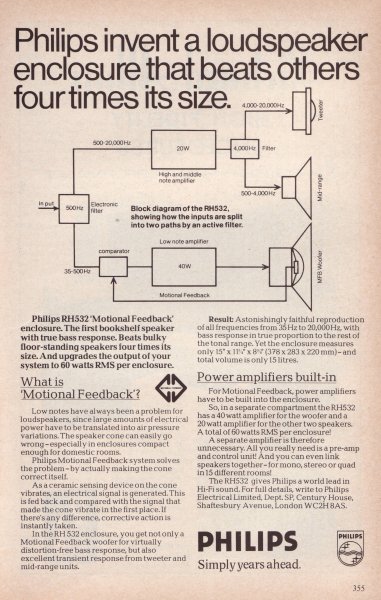 Philips did not invent motion(al) feedback. As early as 1958, G.H. Brodie left a patent on a plate capacitor structure that controls the movement of the cone. The Servo Speaker furthered Brodie’s idea by placing a cylindrical capacitor inside the voice coil and above the pole piece of the magnet. The motion of the cone changed the capacitance of the capacitor, which information was used by the control circuit to compare and correct the signal output from the amplifier. With the servo control, the total harmonic distortion of the speaker driver was significantly reduced.
Philips did not invent motion(al) feedback. As early as 1958, G.H. Brodie left a patent on a plate capacitor structure that controls the movement of the cone. The Servo Speaker furthered Brodie’s idea by placing a cylindrical capacitor inside the voice coil and above the pole piece of the magnet. The motion of the cone changed the capacitance of the capacitor, which information was used by the control circuit to compare and correct the signal output from the amplifier. With the servo control, the total harmonic distortion of the speaker driver was significantly reduced.
However, Philips was the first manufacturer to truly succeed in commercializing a motional feedback loudspeaker. For this, it owes much gratitude to Piet Gouw, then the leader of the High Fidelity group, under whose wings the first prototypes and finished speakers were made. During the heyday, Philips offered a dozen MFB speakers in its collection, starting with the small RH541 with a 7-inch woofer and 1-inch tweeter. Other well-known models were, for example, RH544, AH567, RH532, and the flagship RH545.
The project eventually proved too ambitious and expensive even for Philips. According to one piece of information, as an example, only about 1,000 RH545s were produced before production was discontinued in 1979. Today, motion feedback technology is still on the margin, but not completely dead. For example, Grimm Audio (Eelco Grimm and Guido Tent both have worked for the Philips sound laboratory). Their SL1 speaker has an active Motional Feedback subwoofer SB1. And not surprisingly, another manufacturer with a Dutch background, Kii Audio, has utilized similar technology in their Kii Three, as has the Swiss PSI in its own.
Philips RH 545 MFB Studio
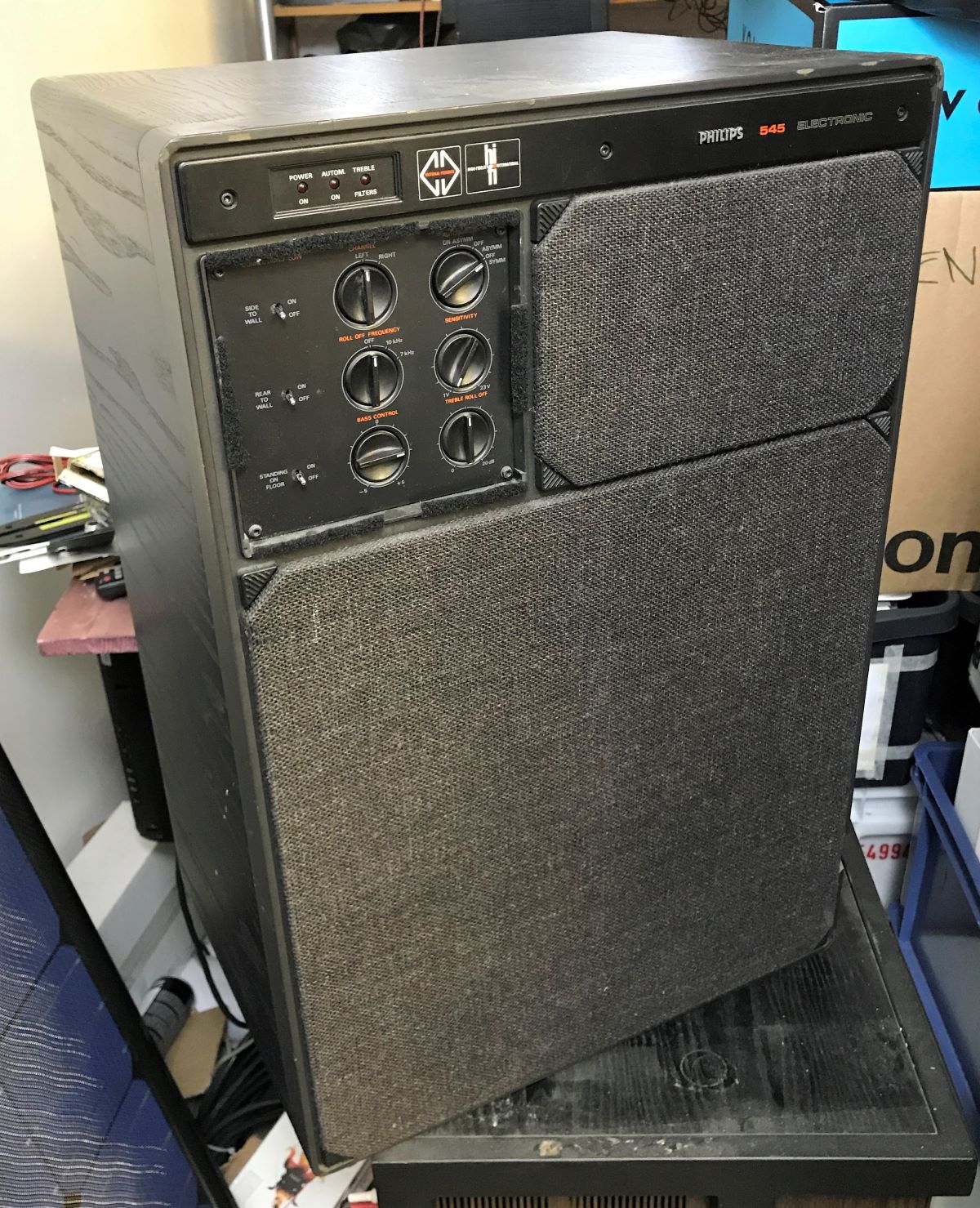
The most ambitious of all the Philips MFB speakers was the RH 545 MFB Studio from 1974. Strict goals were set for its design. One, the sound had to be realistic and credible enough for even the most demanding professional use. Two, the speaker had to be able to (re)produce flawless bass down to 20 Hz from a relatively small cabinet, and even at a sufficiently high sound pressure level without any noticeable distortion. Three, the frequency response had to be adjustable according to the acoustic requirements of the studio. In addition, four, the speaker had to have suitable filters to correct the room response.
Out of this, a 70-liter – 20 L for electronics – three-way wood-fiber speaker with three power amplifiers, and all the necessary adjustments and sound editing options, was created.
The speaker’s 35-watt (RMS) amplifier controls a mid-range 2-inch dome (AD 0210 / Sq 4), and a 15-watter took over the 1-inch tweeter dome (AD 0162 / T8) above the 3,000 Hz crossover frequency. The passive crossover filter comes before the power amplifier. For the reproduction of the frequencies below 500 Hz, Philips chose a 12-inch paper cone (AD 12100 / W4) woofer, and a 50-watt amplifier with an active crossover filter. The amplifiers were all discrete (no op amps) Class AB or B push-pull machines. The signal path of the Rh 545 had a total of 85 transistors and 39 diodes.
In free field measurements, the response of the 545 MFB was 45-17000 Hz ± 1.5 dB, and the target limit of about 20 Hz was -3dB. Fulfilling the studio requirements, the total SPL level of the 545 MFB Studio was measured more than 7.5 octaves at a distance of 108 dB meters!
The Finnish State Technical Research Center measured the RH 545 Studio in the 1970s for the annual Hi-Fi Selection Guide. Then the free-field measurements looked like this.
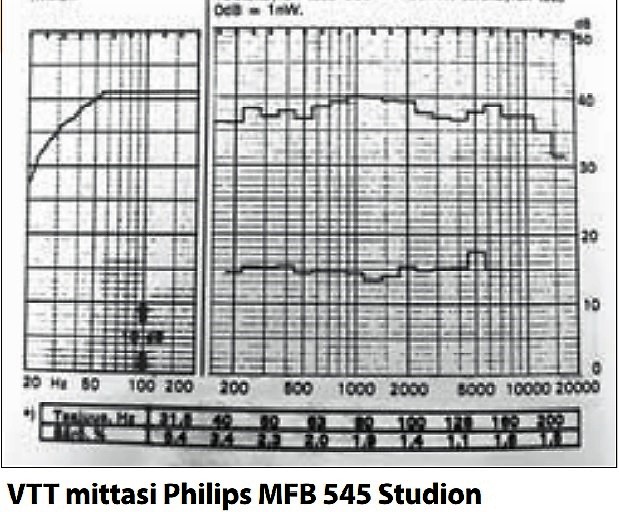
Versatile adjustments
The woofer is in the centerline of the speaker, but the mid-range dome and the tweeter are placed slightly to the side of the centerline because the other side of the front panel is occupied by a plastic case for all sorts of controls. The main adjustment keeps the bass reproduction of the speaker clean and colorless, regardless of whether the speaker is placed back to back with the wall behind, side walls, or directly on the floor. For compensation, there are three accurate electrical SPL filters: 200 Hz: -5 dB; 60 Hz: -5 dB; and 55-160: -3 dB.
In addition, there are “reverberation compensators”, one of which is an active ± 10 dB low-pass filter, and the other two a passive 7 kHz / 10 kHz high-pass filter with adjustable (max. 20 dB / octave) steepness. In addition, a 35 Hz high-pass filter protects the speaker from infrasounds (frequencies below 20 Hz). The remaining 3 controls help to connect the speaker. The first selects a symmetrical (studio) or asymmetrical (DIN 45500) input signal. For the latter, there’s a relay-based automatic on / off switch. The second control provides an 11-stage adjustment of the input sensitivity (1V to 23V), and the third controls the channeling of the speakers.
The 545 MFB Studio is meant to be connected to a suitable preamplifier output either symmetrically (1 V / 10 kOhm) or asymmetrically (1 V / 100 kOhm). Philips also had its own RH551 (1975) preamplifier designed for its high-end MFB speakers. However, the speaker is designed so that the signal can also be taken from the speaker output of the power amplifier, if necessary.
The nerve center
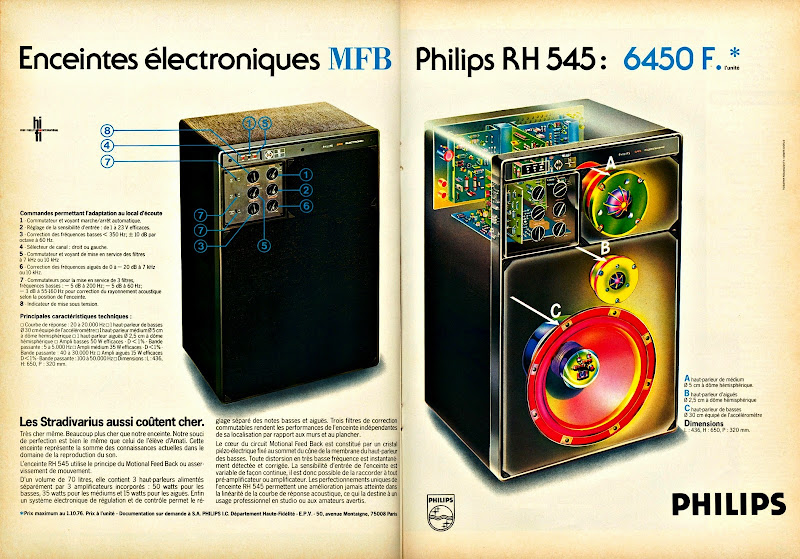
Active speakers like the RH 545 were that common in the 1970s, even in the studio world. However, the actual trump card of the speaker was not its activity, nor even its versatile adjustability, but the piezoelectric accelerometer attached to the center of the woofer cone near the voice coil, and the feedback circuit built on it.
The technical operation of the sensor is quite straightforward. A piezoelectric plate sensor with a total mass of about 30 g produces a small, millivolt-level voltage (max. 500 mV) corresponding to the acceleration of the cone / voice coil, which the JFET circuit (JFET and 2 resistors) then transmits to the comparator in a suitable form. This compares the PXE signal with the input signal of the amplifier, producing a correction signal which is fed back to the amplifier inverting the phase. In this way, any error in the movement of the woofer cone are eliminated immediately at the signal source, and the acoustic signal of the driver resembles that of the original control signal. The higher mass of moving parts as a by-product improves the efficiency of bass reproduction at low frequencies.
That is pretty much clear, but the practical implementation, especially with the tools of the 1970s, was not, and still is not, a trivial trick. As it oscillates and accelerates with the cone, the piezoelectric sensor is exposed to large loads and various forces. The problem is to make the sensor monitor the movement of the cone so as to give correct readings and at the same time not adversely affect other characteristics of the sound reproduction. The mounting of the sensor had to be considered very carefully, as well as its unobstructed movement (rubber blocks). The mass of the moving parts had to be carefully considered, the transistors protected from electrical interference by encapsulation, the effect of air resistance taken into account, etc. etc. Finally, the whole unit had to be naturally subjected to rigorous operational tests.
Since the acceleration in the acceleration feedback loop does not depend on the frequency, the resonant frequency decreases, but at the same time the system Q increases and causes a peak in the amplitude response. To calculate the Q value and equalize the bass response in the MFB speakers, velocity feedback was used alongside acceleration feedback: the voltage corresponding to the velocity of the voice coil was derived from the acceleration signal and added to the signal to the amplifier by a so-called integrator.
Pure bass
The background assumption and the rationale for the 545, like other Phiulips MFB speakers, was that the sound from a high-end speaker should be clear and distortion-free, regardless of the volume of playback or the complexity of the sound source. The starting point, in turn, was the belief that the human ear is sensitive to certain types of faintly observable nonlinearities and impurities, even in the region of the first two octaves. In order to avoid these undesirable impurities, the original signal must be reproduced as accurately as possible as it passes through the speaker, which is reflected in the uniform amplitude and phase responses of the speaker, and the low level of distortion.
A hobbyist who acquired a pair of the MFB 545 Studio speakers five years ago, thinks, after listening to the speakers enough over the years, that Philips succeeded in its aspiration. Compared to a smaller MFB model, he found it to sound “great” as well.
“However, the difference between the 545 and the smaller ones is a big one. The sound of the 545 is terribly effortless and everything is reproduced with extreme precision. In fact, it would not be completely wrong to describe sound as Genelecish. The 545 sounds like a balanced monitor speaker should sound: bass playback drops down enough, and is accurate and clean even at the lowest frequencies. Listening to Béla Fleck is a feast, the electric bass and the kick drum in particular. In this respect, motional feedback seems to work very well. Perhaps the least great thing about the speaker is its tweeter, but only relatively speaking, not absolutely. Mid-range playback is also great. The vocal sound is pure and natural. Despite its monitor-like resolution nature, the speaker sounded not stressful at all.”
That is, he really appreciated the sound quality of the speaker.
During the audition, all the adjustments were in the center position because the room is spacious and quite well acousticated, and there was no need to place the speakers against the wall. The sound stage is most comfortable by turning the speakers about 20-30 degrees toward the listener.
The Philips RH 545 Studio speaker is not a regular visitor in the market of used Hi-Fi gear. As for the sale, price requests have been a few hundred euros. The new owners have praised the value for money online.
pic
Specifications
Frequency response: 20 – 20000 Hz / -3 dB
SPL (7 ½ -oktaavia): 108 dB / 1 m
Volume: 70 L (20 L for electronics)
Tweeter: 1″ dome AD 0162/T8
Midrange driver: 2″ dome AD 0210/Sq 4
Woofer: 12″ AD 121 00/W4
Crossover frequencies: 500 Hz ja 3 kHz
Woofer amp: 50 W (1000 Hz , 40 W) / 5 Hz – 5 kHz
Midrange amp: 35 W (1000 Hz , 25 W / 40 Hz – 30 kHz
Tweeter amp: 15 W (1000 Hz , 10 W) / 40 Hz – 50 kHz
Dimensions (W x H x D): 436 x 650 x 320 mm
Weight: 31 kg


